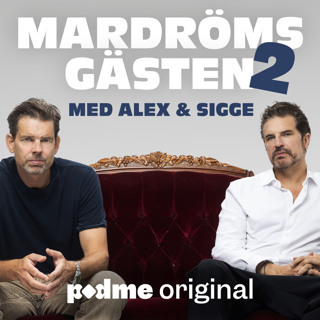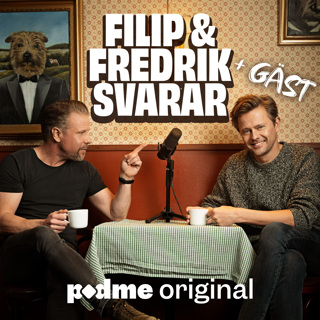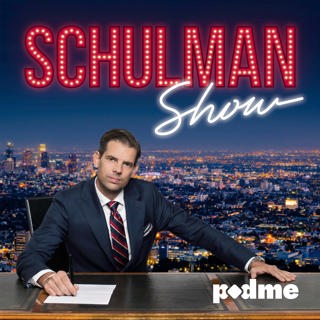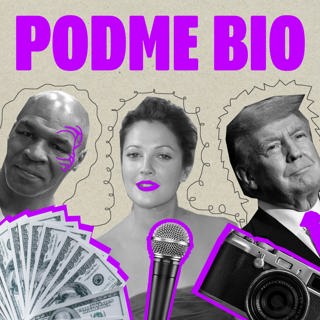
Haydn Symphony No. 94, "Surprise"
If you want to understand how a symphony works, look no further than the works of the Father of the symphony, Joseph Haydn. In 1790, a concert promoter and impresario named Johann Peter Solomon showed up un-announced at the Vienna home of the great composer Joseph Haydn. He immediately told Haydn: "I am Solomon from London and I have come to fetch you." What Salomon and Haydn were about to embark upon would be one of the greatest successes of both of their lives. Haydn would end up making 2 visits to London, presenting an adoring audience with 12 symphonies, almost all of which are still regularly performed today. But the most famous one is the one we're going to be talking about today, the 94th symphony, nicknamed "Surprise" or in the slightly drier German version: "the one with the Drumstroke." The piece is famous for this surprise, which is now so well known that it rarely surprises anyone, though we'll get into just how you might be able to do that in 2022. But the entire piece is a masterpiece in its own right, and so today we'll discuss all of the tricks and traps Haydn pulls with his audience, leading to one of the most enjoyable symphonies of his entire catalogue.
21 Juli 202239min

Derrick Skye: "Prisms, Cycles, and Leaps" w/ Derrick Skye
Derrick Skye is one of the most creative, innovative, and brilliant composers of our time. His orchestral work, Prisms, Cycles, and Leaps is a musical thrill ride spanning influences from literally all over the world, from West African Music, Balkan Folk Music, Hindustani Classical Music, all the way to Appalachan Folk harmonies. I had the great pleasure of talking my way through this piece with Derrick, exploring the mind-bogglingly complex rhythmic patterns, the melodic lines that blend cultures and harmonies, and the infectious joy of this unique piece. If you're not familiar wiith Derrick's music, trust me, take the time to get to know him and his music in this interview/analysis - you won't regret it!
14 Juli 20221h
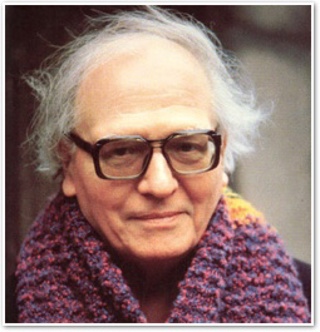
The Music of Olivier Messiaen
There is one composer who I've never devoted a full show to that fills me with the same devotion and ecstasy as the people who claim that Wagner almost immediately dissolves them into tears. His music is widely played, but it has never been totally embraced by the wider classical music audience. There are a variety of reasons for this, but his uniquely 20th century language of tonality mixed with atonality mixed with something completely different from anyone who has ever written music makes it sometimes difficult to pin down his vast contribution to the world of music. His music is as deeply connected to his religious faith as any composer in history, and yes, that includes Bach. His music is as deeply connected to Nature as any composer who ever lived, and his music is tied directly to the colors he saw as he played and listened to it. His name is Olivier Messiaen, and he is one of the greatest composers of the 20th century. I wish I could describe to you the otherworldly feeling I get when I listen to his music, but for a very long time, I shied away from it. Perhaps the reason is that it's extremely hard to talk about Messiaen's musical outlook without talking about his religious faith. I'm a non-religious Jewish person, so the depths of devotion that Messiaen describes regularly as his inspirations were and are foreign to me. And yet, the first time I heard his L'Ascension, every single hair on my body seemed to stand on end. I was completely blown away by these ravishing harmonies, how light seemed to shine off of them, how Messiaen translated his religious devotion into sound. I've not talked about Messiaen's music on the show because it's not easy to grapple with, but I can't wait any longer. Today I'll tell you a bit about Messiaen's life, his upbringing, his musical and religious revelations, and then I'll discuss some of his greatest pieces using three frameworks - religion, nature and specifically birdsong, and color. Join us!
7 Juli 20221h

Dvorak Symphony No. 8
Bucolic. Sunny. Cheerful. Joyous. Folksy. Ebullient. Thrilling. These are all words that I found while researching Dvorak's 8th symphony. Dvorak's gift for writing the most gorgeous of melodies is on full display in his 8th symphony, a piece that has been charming listeners ever since its very first performances. It is, on its surface, an uncomplicated piece, bursting at the seams with melody after melody after melody, almost mirroring one of Brahms' greatest one-liners, where he referred to his summer country home as a place where melodies were so heavily present thatt one had to be careful to avoid tripping on them! The overriding characteristic of this 8th symphony is joy, from its childlike key of G Major, to its raucous use of folk music, and even its smiling through tears slow movement. Very often on this show I try to take pieces that are quite complicated and break them down for you to show you how to follow their twists and turns despite their complexities. But today, I'm going to do the opposite. Today, I'm going to take a piece that is, on its surface, quite simple, and I'm going to show you how this symphony is not quite as simple as it seems. It is a piece full of invention and of the scintillating energy of trying out new ideas. As Dvorak said, he would try to make this symphony "different from the other symphonies, with individual thoughts worked out in a new way." So today on the show we're going to talk about how this symphony is different from other symphonies, and also how Dvorak constructs his chains of melodies that add up to the joyful whole of this piece, though tinged with the melancholy that is almost always present with Dvorak. Join us!
30 Juni 20221h

Mendelssohn Symphony No. 4, "Italian"
How does a composer capture the spirit of a country, especially if it's not his native land? Mendelssohn, in his Italian Symphony, gives us one of the best examples of someone doing just that, giving us a tightly integrated, yet highly independent set of 4 snapshots from his travels all over Italy. And yet, despite the piece being called the Italian Symphony and being indelibly associated with the country, the symphony remains a relatively traditional 4 movement German classical symphony. What we hear then is a brilliant amalgamation of a symphony and a tone poem that is among the first of its kind. The symphony tells no story, has no narrative, and yet, when we finish the breathless Tarantella that ends the piece, we feel like we've been flicking through a photo album of Felix's vacation, smiling (mostly) all along the way. Today we'll talk all about how Mendelssohn builds this symphony and how each movement captures such a distinctive character, while remaining Mendelssohnian to its core - kind, warm-hearted, and full of bubbling energy. Join us!
23 Juni 202247min
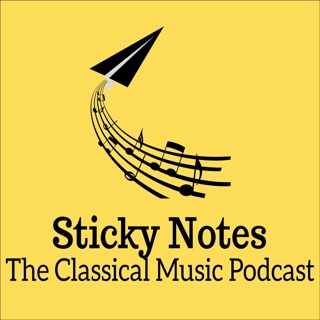
Brahms Piano Quartet in G Minor (+Schoenberg!)
Today I'm going to be talking about one piece, but in two different ways. I'm going to start today with an in-depth look at Brahms' Piano Quartet in G Minor, an early piece of his that reveals an incredible sense of drama, drive, and creativity. This is very different music than I've talked about before with Brahms as this is decidedly the work of a young composer, without all the burnished maturity of Brahms' later music. This is also a great opportunity to revisit the bedrock of the Classical and Early Romantic eras, Sonata Form, a form that makes so many pieces from those eras intelligible and clear. But I'm also going to be talking about another piece. Well, it's the same piece, but to some people, it sounds so completely different that it constitutes a completely new piece entirely. To some others, myself included, it almost constitutes an entirely new Brahms symphony. What I'm talking about is the composer Arnold Schoenberg's arrangement of Brahms's Piano Quartet for a massive orchestra, filling the stage with instruments that Brahms never would have even conceived of! You don't often think of Schoenberg and Brahms in the same breath, but Schoenberg was a devotee of Brahms' music, and often defended him against those who called him a crusty old conservative composer. But Schoenberg was still Schoenberg, and this arraangement of the quartet reflects that in a lot of ways. So along with an exploration of Sonata Form, I'll save a look at the Schoenberg arrangement for the end of th show, since this is a great chance to look at orchestration and how a composer takes a piece written for 4 people and transforms it into a piece for 100. So today we'll dive into this vast and complex piece, and along they way we'll visit Schoenberg's fascinating and sometimes downright wacky arrangement. Join us!
16 Juni 202258min
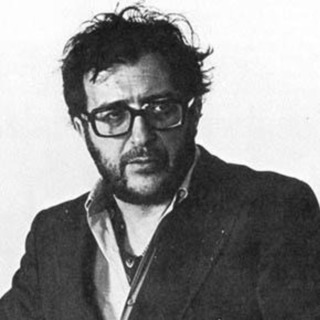
Berio Folk Songs
In 1964, the popular 20th century composer Luciano Berio was commissioned by Mills College in California to write a piece for voice and chamber orchestra. What Berio came up with is one of his most remarkably creative works, which is really saying something considering the innovative and constantly evolving way that he wrote music. Berio once said: "My links with folk music are often of an emotional character. When I work with that music I am always caught by the thrill of discovery… I return again and again to folk music because I try to establish contact between that and my own ideas about music. I have a utopian dream, though I know it cannot be realized: I would like to create a unity between folk music and our music — a real, perceptible, understandable conduit between ancient, popular music-making which is so close to everyday work and music." The words "thrill of discovery" are at the core of what makes the Folk Songs so wonderful and easy to listen to. They combine a modernist classical aesthetic with songs that are of such beauty that it is hard not be overwhelmed by them. Berio took 11 folk songs from 5 different regions of the world, from places as far away as the United States and Azerbaijan, and transformed them. He wrote: "I have given the songs a new rhythmic and harmonic interpretation: in a way, I have recomposed them. The instrumental part has an important function: it is meant to underline and comment on the expressive and cultural roots of each song. Such roots signify not only the ethnic origins of the songs but also the history of the authentic uses that have been made of them." Today on the show I'm going to take you through these 11 songs, going on a historical expedition to find some of their roots and to get as close to the original songs as I can, and then looking at how Berio re-worked these songs into this cycle that consistently stuns people with its beauty and creativity. If you've never heard these pieces before, get ready, because Berio will take you on a remarkable journey. Join us!
9 Juni 202255min

Prokofiev Symphony No. 5
It's very easy to compare Sergei Prokofiev to Dmitri Shostakovich. They are the two most famous representatives of Soviet and Russian music of the 20th century, they lived around the same time, and their music even has some similarities, but at their core, you almost couldn't find more different people than Prokofiev and Shostakovich. Shostakovich was neurotic, nervous, and timid. Prokofiev was confident and cool. Shostakovich was tortured by the Soviet government, and while Prokofiev certainly had his runins with Stalin and his crones , his life wasn't so inextricably linked to the Soviet Union, besides the fact that he had the bad luck to die on the same day as Joseph Stalin, which made it so that there were no flowers available for his funeral. Prokofiev was able to travel, and see the world, generally without nearly as much interference as Shostakovich faced. These two lives are reflected in two very different musical approaches. Shostakovich's wartime symphonies are full of terror and violence, whlie Prokofiev wrote that his 5th symphony was a hymn to the human spirit. We don't know how much that reflects his true feelings, but its undeniable that there is a certain "optimism" to this symphony that both thrills and unsettles listeners to this day. It is also filled with traademark Prokofiev cynicism and sarcasm, and so we are left, as always, with a contradiction. What did Prokofiev mean with this symphony? Join us as we try to find out!
2 Juni 20221h 3min




